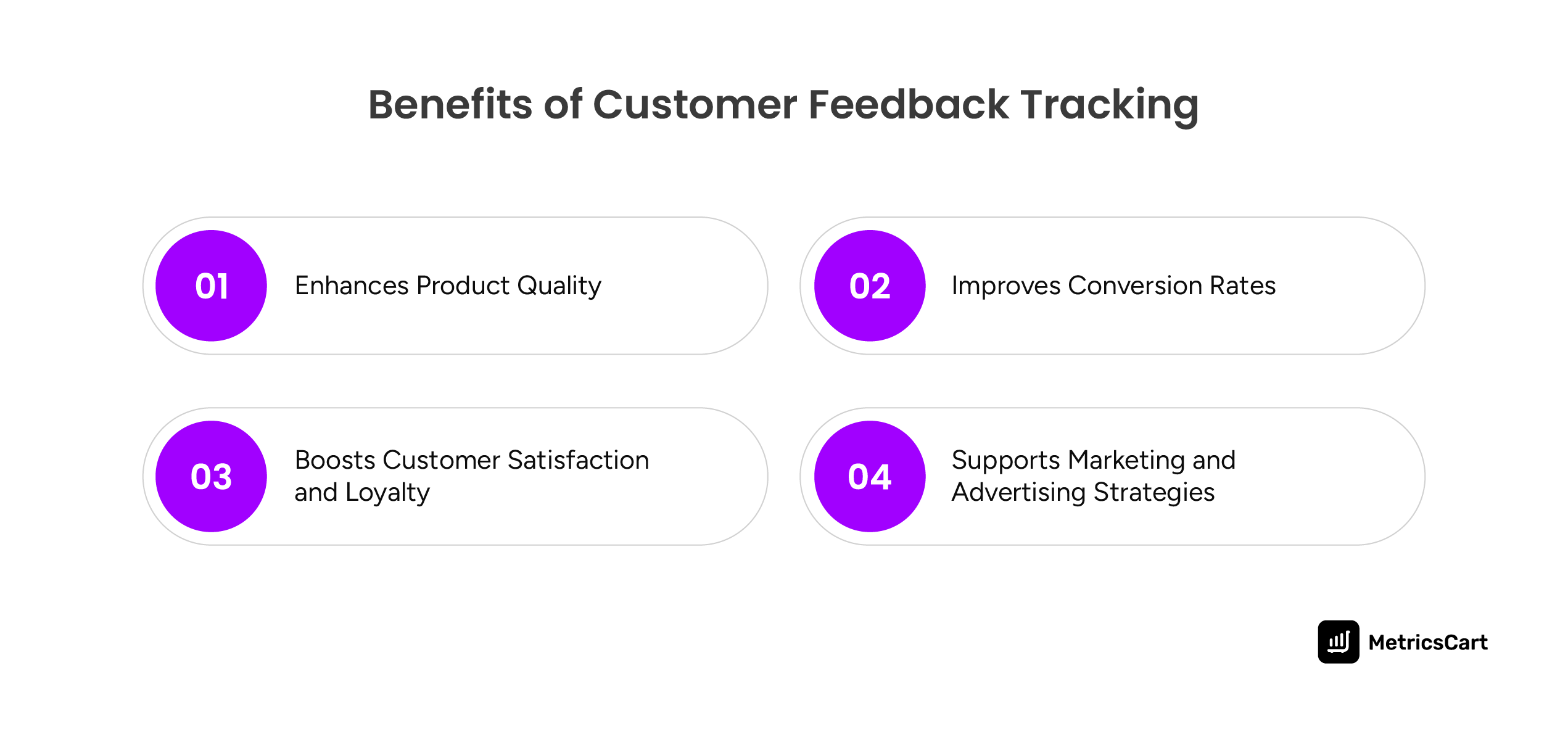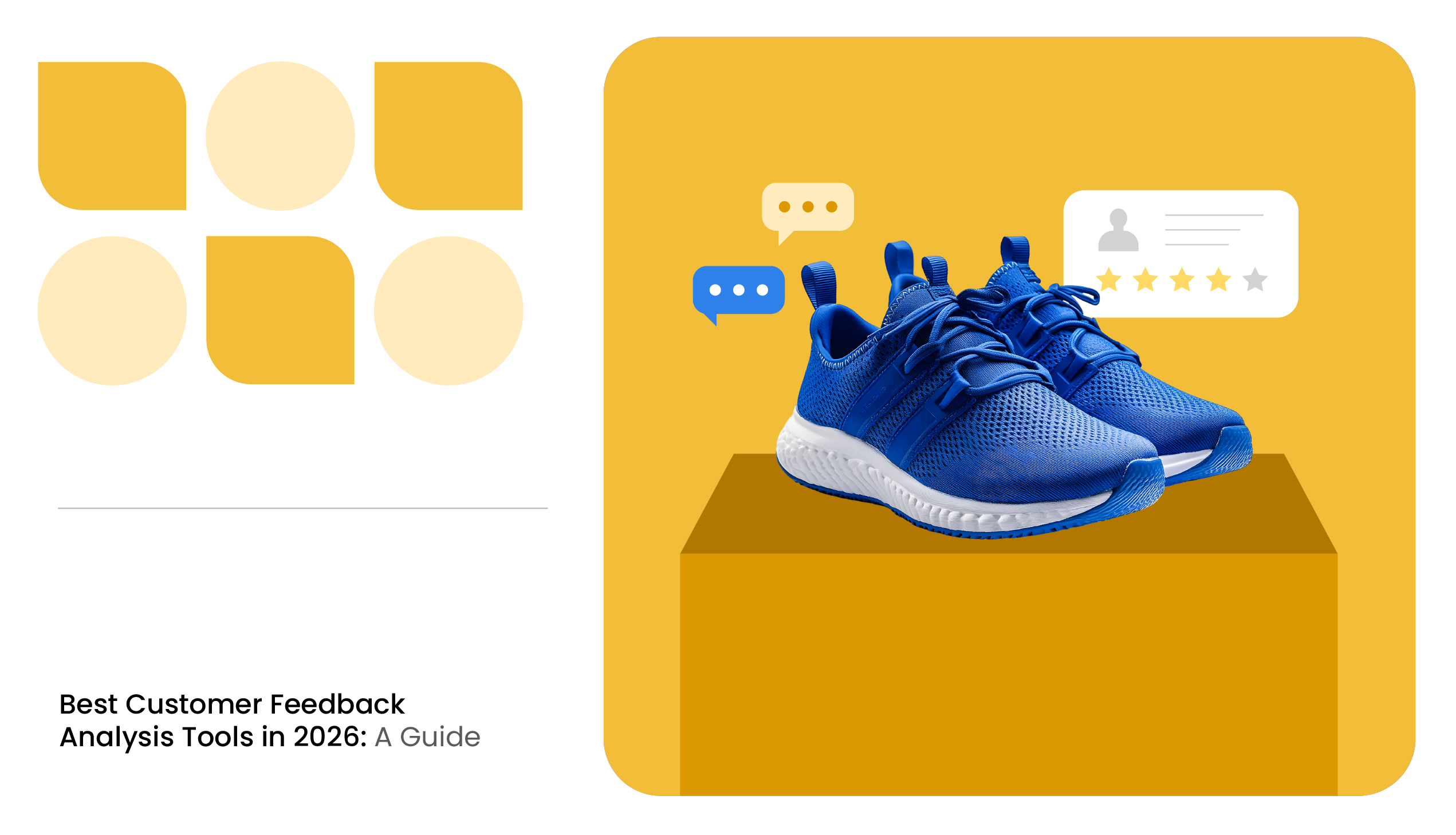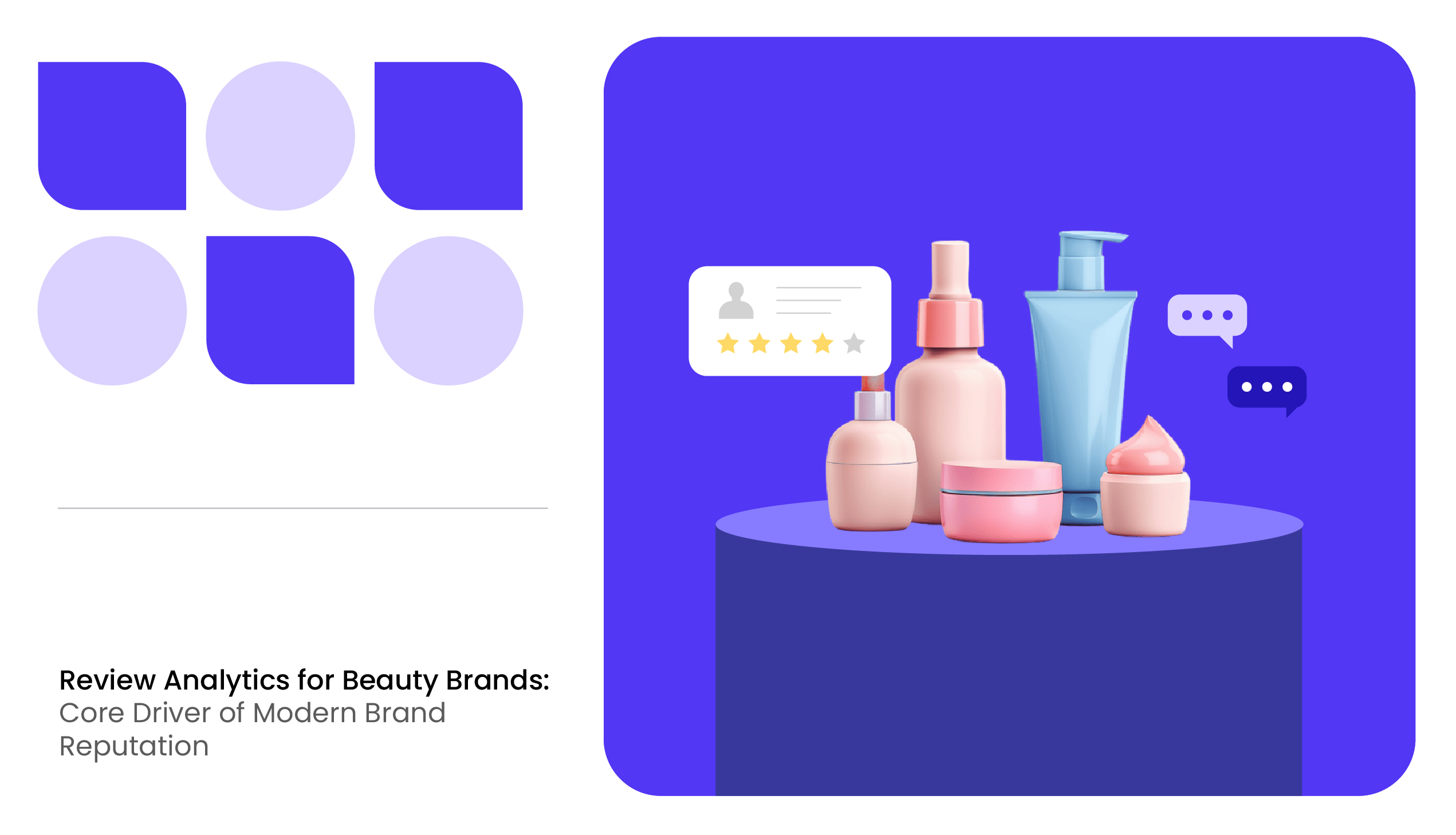93% of shoppers say online reviews influence their buying decisions.
That’s almost every customer reading what others think before they decide to trust your brand.
Now, imagine your team isn’t tracking that feedback.
Customer reviews aren’t just comments; they’re free, honest insights into what’s working, what’s broken, and what your next move should be. From product tweaks to content improvements, the most innovative e-commerce teams treat review data like a real-time performance dashboard.
That’s where MetricsCart’s review monitoring software comes in. It pulls in reviews from Amazon, Walmart, Target, and other marketplaces, highlights recurring issues, performs sentiment analysis, and even benchmarks your feedback against that of competitors.
Instead of scrolling through hundreds of reviews manually, you get clean insights that your product, CX, and marketing teams can act on quickly.
In this post, we’ll walk through the benefits of customer feedback tracking for e-commerce brands.
How does Customer Feedback Tracking Improve Brand Success?
Tracking customer feedback (primarily in the form of product ratings and reviews) and acting on it can transform an e-commerce business. Below, we break down the major ways systematic review monitoring drives brand success:

Enhances Product Quality
Reviews are an unfiltered window into how your product performs in real-world use, often revealing flaws or improvement opportunities that in-house teams might overlook.
By analyzing recurring complaints or suggestions, brands can make targeted product improvements that increase quality and user satisfaction. For example, a fitness gear brand noticed through reviews that many customers complained about its resistance bands snapping after a few uses.
Based on this feedback, the company switched to a more durable material and added clearer usage instructions, resulting in a drop in negative reviews and a boost in repeat customers.
Importantly, product tweaks guided by customer feedback can also reduce costly returns and warranty claims. Brands that actively use user-generated content in product development tend to gain market share, improve customer loyalty, and even see lower return rates.
READ MORE | Confused about Using Reviews to Improve Products? Dive into Using E-Commerce Customer Reviews and Ratings for Product Development
Improves Conversion Rates
Customer reviews heavily influence whether a shopper clicks “Add to Cart” in the first place. Positive reviews and high ratings serve as social proof that convinces new customers to make a purchase. At the same time, even negative feedback (when addressed properly) can alleviate doubts that hold buyers back.
Numerous studies have quantified the impact: for instance, displaying at least five product reviews can boost conversion rates by up to 270% compared to having no reviews.
Moreover, responding to reviews and feedback demonstrates that your brand values customer input. For example, responding to negative reviews on Amazon and addressing the concerns shows customers you’re listening and makes them feel heard. This can result in increased repeat purchases from satisfied customers across platforms like Amazon, Walmart, and Target.
Boosts Customer Satisfaction and Loyalty
Customer feedback tracking is essential for maintaining the satisfaction and loyalty of your existing customers. When customers take the time to leave a review (whether positive or negative), they’re giving you the opportunity to engage and improve their experience.
Brands that actively listen and respond to this feedback often turn one-time buyers into repeat customers and even brand advocates.
Moreover, it allows you to identify friction points in the buying process, whether that’s a complicated checkout or delayed shipping. Addressing these issues will improve overall customer satisfaction.
Quickly responding to customer complaints or issues prevents negative experiences from affecting future purchases. On platforms like Target, negative feedback can affect your overall seller rating, so addressing concerns immediately helps maintain a positive reputation.

Supports Marketing and Advertising Strategies
In an age where consumers are skeptical of polished ads, user-generated feedback serves as social proof that builds credibility. Insights from customer feedback can help refine your digital advertising strategies.
By featuring snippets of positive reviews and testimonials on your website, product pages, social media, and even in paid ads, you let your happy customers do the convincing for you.
For example, including star ratings and review quotes in email campaigns or Facebook ads can significantly improve click-through and conversion, because shoppers see genuine endorsements rather than just brand messaging.
Sharing user-generated photos or videos (when available) from reviews can similarly boost engagement, as they show real-life product experiences that polished stock photos can’t replicate.
Conclusion
Tracking customer reviews is a strategic advantage. Brands that monitor feedback consistently are quicker to fix product flaws, faster to act on new opportunities, and better at meeting shopper expectations.
The result? Higher ratings, better conversion rates, fewer returns, and stronger customer loyalty.
With the right tools, you don’t have to guess what customers think—you’ll know. MetricsCart’s Review Monitoring streamlines this process by consolidating reviews from all key platforms into a single dashboard, flagging recurring issues, and identifying trends before they harm your brand.
If you’re not actively listening to your customers at scale, you’re leaving insights—and revenue—on the table.
Unlock the Power of Customer Feedback.
FAQs
Customer feedback reveals product flaws, shopper expectations, and conversion barriers. Tracking it helps brands improve quality, boost ratings, and drive sales.
Quick, thoughtful responses to reviews show you care. They can convert unhappy buyers into loyal customers and improve brand credibility.
By spotting recurring complaints or feature requests, brands can make specific product improvements that reduce returns and increase satisfaction.
Yes. Products with strong, authentic reviews convert more. Tracking feedback also helps optimize product pages and resolve issues that hurt conversion rates.
Absolutely. If customers report confusion or defects, brands can fix the root cause and reduce return volumes over time.






